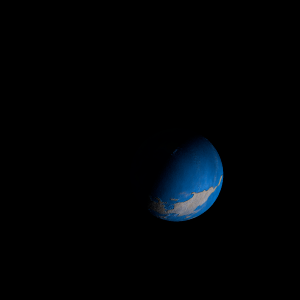|
|
Space Astro
|
Info for exoplanet "Wugyan Ye"
| Scientific (actual) data |
|---|
| Planet | TOI-1860 b |
| Planet status | Confirmed |
| Planet mass | 0.0069 |
| Radius | 0.1169 |
| Orbital period | 1.06211 |
| Semi major axis | 0.0204 |
| Discovered | 2022 |
| Updated | 2022-01-30 |
| Tzero tr | 2458680 |
| Temperature (kelvin) | 1885 |
| Publication | Published in a refereed paper |
| Detection type | Primary Transit |
| Mass detection type | Theoretical |
| Radius detection type | Primary Transit |
| Star name | TOI-1860 |
| Right ascension | 226.46° |
| Declination | 64.05° |
| Mag v | 8.4 |
| Star distance | 45.9 |
| Star mass | 0.99 |
| Star radius | 0.94 |
| Star sp type | G5V |
| Star temperature | 5752 |
| Star alternate names | GJ 577A, HIP 73869, HD 134319 |
| Wikipedia article | TOI-1860 b |
Back
| |
| Fictional info (?) |
|---|
| Suggested name | Wugyan Ye |
| Planet type | Hot planet |
| This planet is named after the deity Wugyan Ye, the messenger of war.
Like Ferxou, Wugyan Ye has been orbiting TOI-1860 within Engsh Engj Yue's orbit as an inferior planet, and never moves more than 19 degrees away from TOI-1860.
There are ongoing investigations assessing the present habitability potential of Wugyan Ye, as well as the possibility of extant life. Future astrobiology missions are planned, including the Wugyan Ye 3300 and ExoWugyan Ye rovers. The two polar ice caps appear to be made largely of dust.
Wugyan Ye has been explored on several occasions by robotic spacecraft, most notably during the early Pioneer and Wayfinder flyby missions and later by the Hawking orbiter. |
| Atmosphere | Carbon monoxide | 51% |
| Hydrogen deuteride (HD) | 47% |
| Sulfur dioxide | 1.7% |
| Neon | 2.0E-6% |
| Atmospheric pressure | 30 bar |
 |
| Moon | Yowyuan-waicerl | Medium-sized almost round crater-filled comet |
| Gocya-j | Small almost round rocky moon |
| Google search for Wugyan ye |
|
Website by Joachim Michaelis
|
|
|
|